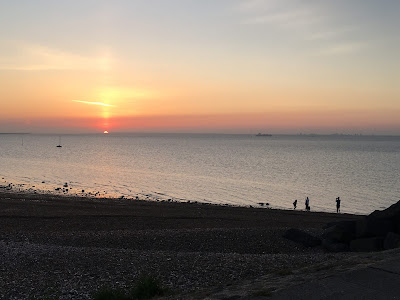Day 4/10 Meeting with artist Laurie Harpum
What does an artist need to survive? How do places become habitats for creativity to thrive? What pollutes the narrative? How can the tide be turned? I went round to artist Laurie Harpum's house and we talked about the different ways we value creative output. We talk about groups of people trying to work together to run collaborative spaces and the difficulty of conflicting directions, aspirations and ideas of who their audience should be.
I think about the creative communities I've temporarily been a part of through residencies and the longer-term relationships I've had with people in places I've lived. In these small-scale creative communities there's a real tie that binds people together and such an appreciation for those who work hard to make things happen. Unfortunately I've found that a hierarchy can emerge where some people are seen as more deserving of the community's attention than others and resentment grows. This hierarchy seems to run merrily along the well-worn white, male, cis lines. Even though in these communities people get to know the ins and outs of each other's lives - including details of their caring responsibilities, jobs and wider home life - in my experience they still fail to see the wider picture when it comes to each other's creative input.
It can be hard to make the commitment to each other's practices run deep enough to endure all the crap that comes with trying to be an artist when you don't get paid to make work. Competition can come between people and mishandled disagreements can fester. Creative communities need to protect themselves against agents (arts organisations, funding bodies, academics) who - willingly or not - might sow division. We need agree on strategies to engage with the conflict that is inherent to any group of people coming together. Right now in Thamesmead our creative community is not autonomous from the property developer who put us all there. We welcome their funding and meetings on Zoom but we should really be meeting without them, strategising the way we want our time in this place to go.
I hear about Laurie's Love Sheppey project from other people before her. They tell me about the rocks that she painted and distributed around the island in the run up and how it got people talking in a way they hadn't seen before. Laurie shows me the intricately detailed ceramic life jackets she strung up in Margate to raise awareness of the refugee crisis. They were taken down. We talk about the frustrations of large institutions unwilling to engage with their creative community in a meaningful way.
Laurie tells me that Sheppey needs a hub where people can exhibit together. We talk about the challenges of putting art and craft alongside each other. Their traditions are different (yet overlap), the way that makers relate to their work often contrasts with the way that artists do. But if they both have opportunities to develop groups before coming together to collaborate, co-operate and challenge each other that could bring energy to both sides of the creative community right? Laurie makes a good point that this is long, sustained work. People can't just parachute in with big budgets and short timelines. It obviously needs money too – studio blocks for example don't exist on the island right now. Laurie talks about the feedback sessions she enjoys with Sheppey Art Society, where there's already a mix of people prepared to share thoughts together on their wide variety of practices. It's got the got the outcomes of a crit without the vibe of a crit. I realise this is something I need to make happen in Thamesmead.
Laurie shares something that is very familiar to me, which is people not travelling to see something on the island when they're more than happy for you to travel to see something that they're doing. This happens a lot in Thamesmead. She talks about the Medway towns looking to London instead of the creative communities around them in Kent and I realise we're doing the same in Thamesmead – looking west instead of east. The creative communities of Kent are right there. What about an exchange then? Something that builds a Sheppey – Thamesmead connection. It's too far for regular group hang outs but there's Zoom and empty flats here, we should get the property developer on board and kit one out as a flat for visiting artists...
This is maybe a distraction but we agree that for these small creative communities to thrive, people within them need to gain validation form people outside of their local context as well as within.
Laurie says she lived on the island for years before she got to know the other artists on the island. This is just wasted time!
Right now Laurie's excited by a 2 year creative project on estuary learning she started in April with Belinda. Classes of kids visit them and they work together along the shore line of the island to engage with creatures, natural processes and human detritus. It sounds totally stimulating and powerful. The natural environment provides so much scope for creativity on the island.
In terms of creating a habitat in which artists can thrive, in Sheppey it seems like there needs to be more support for what's happening from people off the island as well as long-term commitments to making creative efforts sustainable on the island. Individuals are trying really hard but there's only so much they can do on their own.


